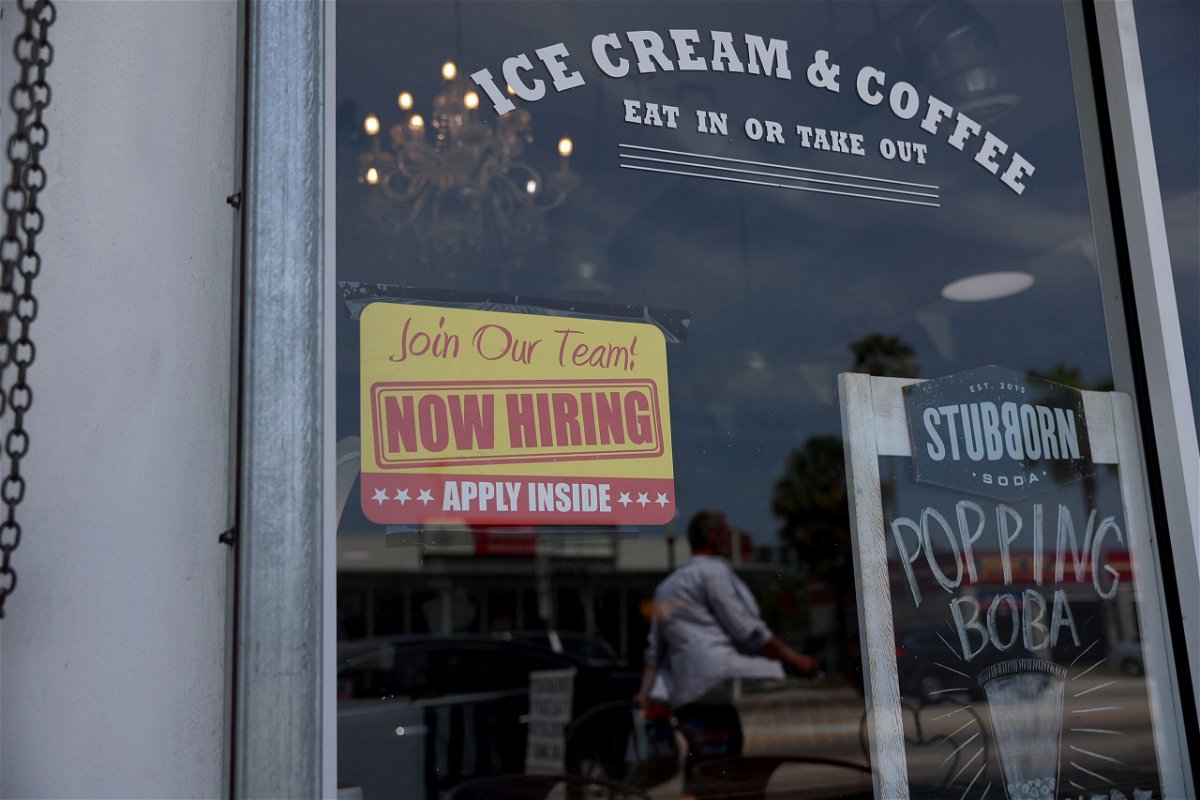America added 306,000 fewer jobs last year than we thought. But the labor market is still hot

By Alicia Wallace, CNN
Minneapolis (CNN) — US job growth during much of the past year was weaker than previously projected by a little more than 300,000 jobs, according to new federal data released Wednesday.
As part of the agency’s annual benchmark review of payroll data, the Bureau of Labor Statistics revised down March 2023’s employment gains by 306,000 positions.
Despite the downward revision, which actually landed well below some estimates, America’s labor market remains historically strong.
When spread through the prior year, that amounts to about 25,000 fewer net jobs added per month, meaning that the average monthly job gain for the 12 months ended in March 2023 was nearly 312,000 versus 337,000, BLS data shows.
“The change is -0.2% and the average adjustment over the last 10 years has been 0.1%,” Chris Rupkey, economist with FwdBonds, wrote in a note Wednesday. “We don’t see any sign here that the labor market is secretly weak.”
“Keep in mind the economy is still growing, having created 870,000 more jobs since March,” he added. “July payroll employment is 156.342 million. When the economy stops growing, we will see non-farm payroll employment fall. No recession looming here in the benchmark revision.”
Slower but still strong
The bulk of the downward revisions were in the transportation and warehousing sector (down 146,400) as well as the professional and business services sector (down 116,000).
“It’s not an eye-opening revision that would really change the picture in terms of where the economy is at right now,” Brett Ryan, senior US economist for Deutsche Bank, told CNN in an interview.
For now, the economy continues to do its darnedest to stave off the breathless calls for an impending recession: Job growth has slowed from a red-hot clip to a steadily strong pace, layoffs haven’t become widespread and consumers continue to spend enough to keep the economy growing.
“I think that the probability of the economy slipping into a recession near term has certainly diminished,” he said.
For now, Ryan and other Deutsche Bank economists still have a recession as their base case, but they plan to revisit those projections in the coming weeks after a key series of economic data is released (including the August jobs report, a critical inflation and consumer spending gauge and GDP revisions).
Some of the biggest headwinds include rising delinquency rates on credit card and auto loan debt, the drawdown of excess savings as well as slower job growth, he said.
“But what is different is that the momentum going into those headwinds, which are all about to hit in [the fourth quarter], looks a little better,” he said. “And that leaves the conclusion that maybe the economy is able to weather these upcoming headwinds.”
Clearer picture
Federal data is fluid and frequently subject to change as more detailed and accurate information becomes readily available. The Labor Department’s monthly jobs report is based upon survey responses from employers across a wide swath of industries. The initial estimate is then revised twice more.
Every year, the BLS conducts a revision to the data from its monthly survey of businesses’ payrolls, then benchmarks the March employment level to those measured by the Quarterly Census of Employment and Wages program.
The QCEW provides a more comprehensive read on the number of businesses, employees and wages at the state, regional and county level because it derives that data from quarterly tax reports submitted by businesses to their states. Given that process, the QCEW comes at a significant lag: The data for the first quarter of 2023 was also released Wednesday.
Wednesday’s preliminary benchmark revision won’t change the existing monthly employment data for now. The monthly totals for 2022 will be updated in February 2024, when the final benchmark revision is issued.
The-CNN-Wire
™ & © 2023 Cable News Network, Inc., a Warner Bros. Discovery Company. All rights reserved.